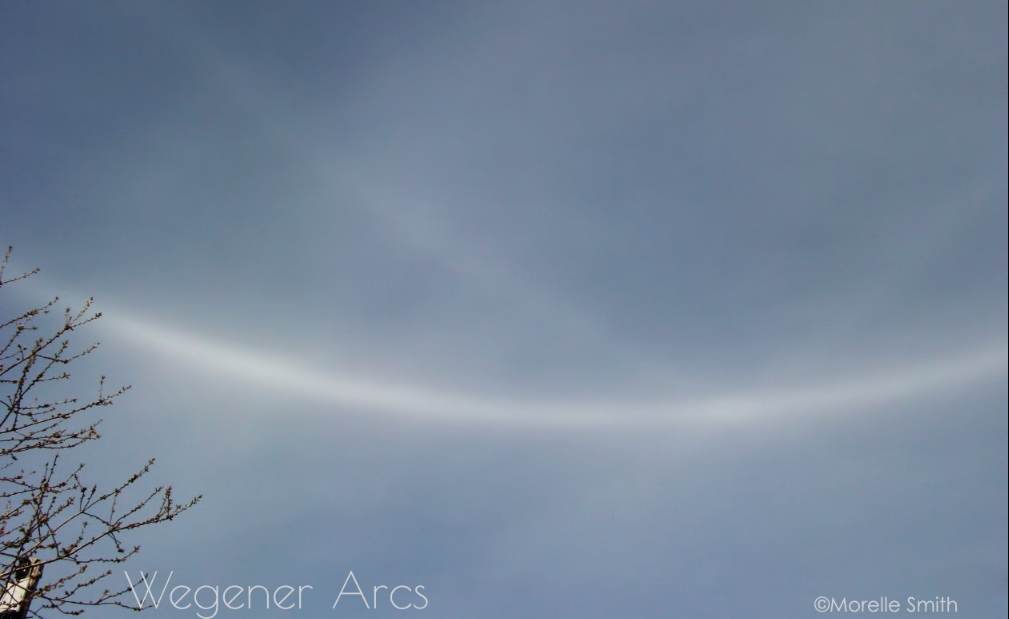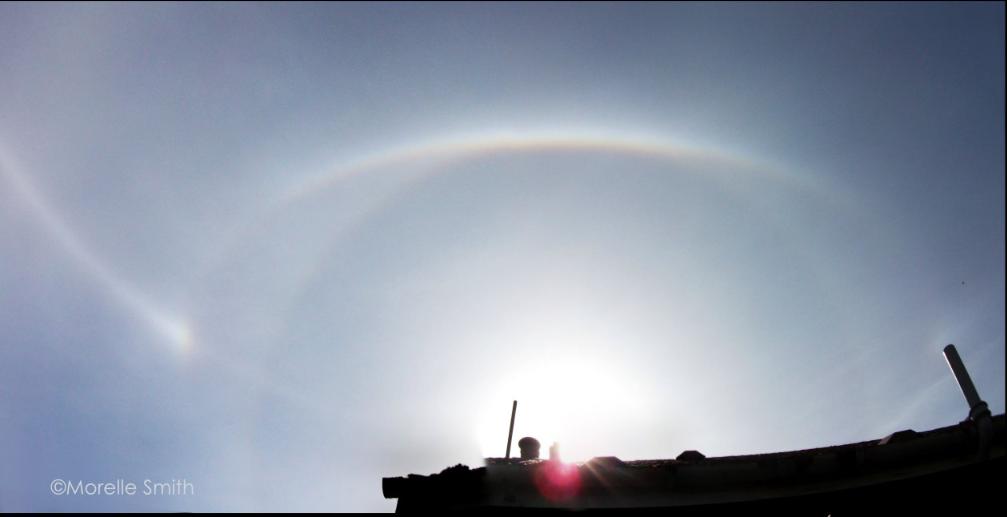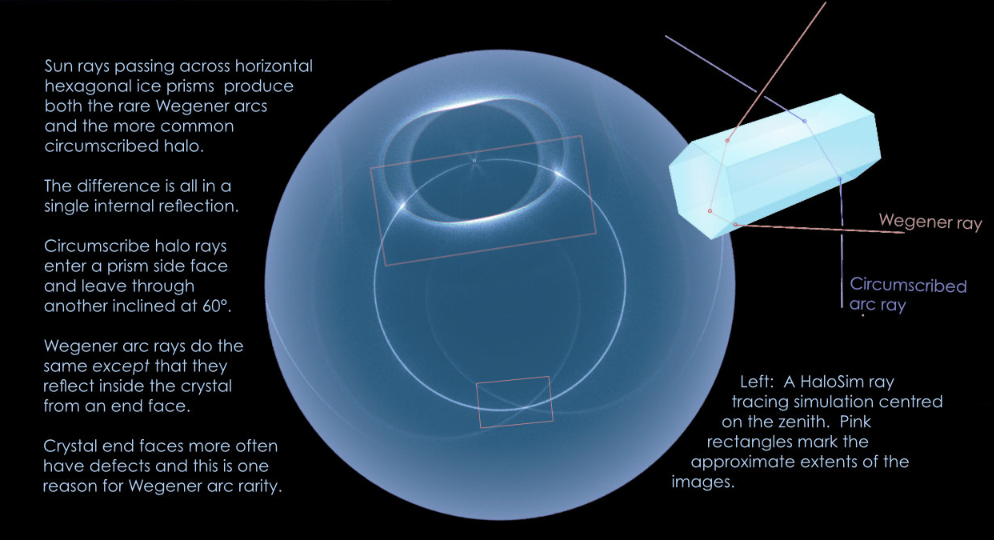Wegener Arcs
Wegener Arcs: Rare Atmospheric Optical Phenomena
Wegener Arcs, named after the renowned polar scientist and explorer Alfred Wegener, are a fascinating and rare atmospheric optical phenomenon. These elusive arcs are formed when sunlight passes through horizontal hexagonal ice prisms found in cirrus clouds. While circumscribed halos and sundogs are more commonly observed, Wegener Arcs stand out due to a unique internal reflection that occurs within the ice crystals.
When sunlight enters a prism, it typically exits through another face of the prism inclined at 60°, creating a circumscribed halo. However, in the case of Wegener Arcs, the light rays reflect inside the crystal from an end face, resulting in the formation of these rare arcs. The internal reflections within the crystal end faces play a significant role in the rarity of Wegener Arcs, as these faces often have defects that limit their occurrence.
To observe Wegener Arcs, it is crucial to pay attention to both the sky surrounding the sun and the opposite direction. In some instances, the bright white parhelic circle can be seen crossing the image away from the sun, with two faint arcs intersecting it diagonally. These arcs are the elusive Wegener Arcs and serve as a testament to the intricate beauty of atmospheric optics.
When looking towards the sun, the same parhelic circle can be observed crossing the sun itself. Additionally, a circumscribed halo and sundogs may also be visible. It is interesting to note that these phenomena appear noticeably distant from the inner 22° halo. To identify and understand these optical phenomena more comprehensively, referring to halo identification guides is recommended.
To better visualize and study Wegener Arcs, researchers and enthusiasts employ ray tracing simulations such as HaloSim. By centering these simulations on the zenith and using pink rectangles to mark the approximate extents of the images, scientists can gain insights into the formation and behavior of Wegener Arcs. These simulations aid in understanding the intricate interplay of sunlight and ice crystals, shedding light on the mechanisms behind these captivating atmospheric optical phenomena.
In summary, Wegener Arcs are a rare and captivating sight in the realm of atmospheric optics. These arcs, formed through a unique internal reflection within ice crystals, distinguish themselves from more common phenomena such as circumscribed halos and sundogs. The defects present in crystal end faces contribute to the rarity of Wegener Arcs, making them a special find for those fortunate enough to witness them. By exploring ray tracing simulations and referencing identification guides, scientists continue to deepen our understanding of Wegener Arcs, unraveling the mysteries of our dynamic atmosphere.

A few days ago, cirrus clouds over southern Scotland and Northern Ireland were filled with optical quality ice crystals. Morelle Smith (Blog) in Scotland caught the halos they made. The previous OPOD has those over the sea in Northern Ireland.
Top: The scene opposite the sun away from the bright halos. Always check the opposite direction when the sky has something eye catching! A bright white parhelic circle crosses the image. The two faint arcs crossing it diagonally are the rare ones. They are Wegener Arcs, named after the polar scientist and explorer Alfred Wegener who also suggested continental drift.
Lower: Looks sunwards. The same parhelic circle crosses the sun. There is a circumscribed halo and sundogs. Note how far they are from the inner 22° halo. Check the previous OPOD for halo identification.


Sun rays passing across horizontal hexagonal ice prisms produce both the rare Wegener arcs and the more common circumscribed halo.
The difference is all in a single internal reflection.
Circumscribe halo rays enter a prism side face and leave through another inclined at 60°.
Wegener arc rays do the same except that they reflect inside the crystal from an end face.
Crystal end faces more often have defects and this is one reason for Wegener arc rarity.
Left: A HaloSim ray tracing simulation centred on the zenith. Pink rectangles mark the approximate extents of the images.
Note: this article has been automatically converted from the old site and may not appear as intended. You can find the original article here.
Reference Atmospheric Optics
If you use any of the definitions, information, or data presented on Atmospheric Optics, please copy the link or reference below to properly credit us as the reference source. Thank you!
-
<a href="https://atoptics.co.uk/blog/wegener-arcs/">Wegener Arcs</a>
-
"Wegener Arcs". Atmospheric Optics. Accessed on November 16, 2024. https://atoptics.co.uk/blog/wegener-arcs/.
-
"Wegener Arcs". Atmospheric Optics, https://atoptics.co.uk/blog/wegener-arcs/. Accessed 16 November, 2024
-
Wegener Arcs. Atmospheric Optics. Retrieved from https://atoptics.co.uk/blog/wegener-arcs/.